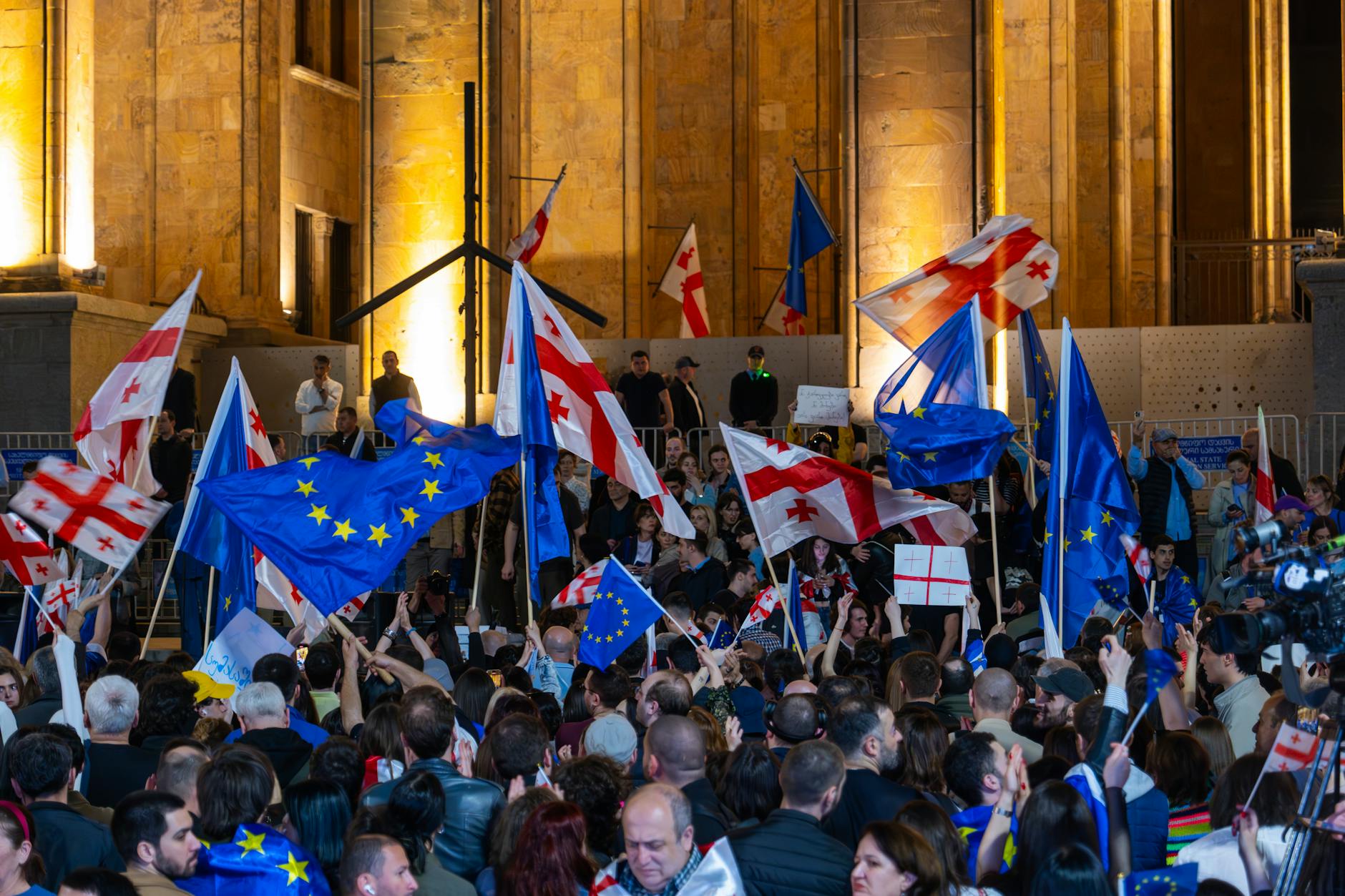Guiding Ukraine’s Future: The Nuanced Landscape of Security Guarantees
As discussions around Ukraine’s long-term security evolve, understanding potential troop deployments and their implications is crucial for a stable future.
The question of how to ensure Ukraine’s enduring security in a post-conflict era is one of the most pressing geopolitical challenges of our time. While the specifics remain a subject of intense debate and diplomatic maneuvering, the potential inclusion of troop deployments as part of a broader security guarantee framework has emerged as a significant, albeit complex, option. This article delves into the multifaceted nature of such guarantees, examining the various forms they might take, the historical and strategic contexts that inform these discussions, and the potential benefits and drawbacks associated with different approaches.
The current international discourse, influenced by ongoing geopolitical shifts and the experiences of recent conflicts, necessitates a thorough exploration of all viable pathways to securing Ukraine’s sovereignty and territorial integrity. This analysis aims to provide a comprehensive overview, drawing upon available information and expert perspectives, to foster a clearer understanding of this critical issue.
Context and Background
The ongoing conflict in Ukraine, which began with Russia’s full-scale invasion in February 2022, has underscored the profound vulnerabilities faced by a nation attempting to assert its independence and democratic aspirations in the face of external aggression. Prior to the full-scale invasion, Russia had already annexed Crimea in 2014 and supported separatists in eastern Ukraine, leading to years of simmering conflict.
Ukraine’s pursuit of closer ties with Western institutions, particularly NATO and the European Union, has been a central element of its foreign policy since gaining independence in 1991. This aspiration, however, has been consistently opposed by Russia, which views NATO expansion as a direct threat to its own security interests. The current conflict can be understood, in part, as a manifestation of this fundamental geopolitical tension.
In the absence of formal NATO membership, Ukraine has been seeking robust security assurances from its international partners. These assurances are intended to deter future aggression and provide concrete mechanisms for defense in the event of renewed hostilities. The concept of security guarantees is not new; many nations have relied on such agreements throughout history to maintain their stability and territorial integrity. However, the specific modalities of these guarantees in the context of the current Ukrainian crisis are subject to considerable discussion and negotiation.
The role of the United States in providing security assistance to Ukraine has been paramount. Since the outset of the invasion, the U.S. has been a leading supplier of military aid, intelligence, and financial support. However, direct U.S. military intervention in the form of deploying its own combat troops on Ukrainian soil has been a carefully avoided topic, largely due to the potential for direct confrontation with nuclear-armed Russia and the risk of escalating the conflict into a wider war between NATO and Russia.
President Trump’s stance on the deployment of American forces to Ukraine has been a subject of public interest and speculation. While no definitive commitment has been made publicly regarding the addition of U.S. troops to any security framework, the general discussion around security guarantees encompasses various possibilities for troop contributions from allied nations. The absence of publicly detailed plans for such deployments reflects the sensitive and complex nature of these negotiations.
Understanding the historical precedents for security guarantees is also important. For instance, the security arrangements following World War II, the role of NATO in post-Cold War Europe, and various bilateral defense pacts offer insights into how nations have structured mutual defense obligations. However, each geopolitical context is unique, and the specific circumstances in Ukraine present their own set of challenges and opportunities.
In-Depth Analysis
The potential forms that security guarantees in troop form could take in Ukraine are diverse and depend heavily on the political will of contributing nations and the specific security objectives being pursued. No single model is universally agreed upon, and the ultimate shape of any arrangement would likely be a hybrid of different approaches.
Multinational Peacekeeping or Stabilization Force
One prominent model involves the deployment of a multinational force, potentially operating under a United Nations mandate or a coalition of willing nations. Such a force could be tasked with a range of responsibilities, including:
- Monitoring ceasefire agreements: Ensuring compliance with any negotiated cessation of hostilities.
- Border security: Patrolling and securing Ukraine’s borders, particularly those with Russia and Belarus, to prevent incursions.
- Demilitarized zones: Establishing and overseeing buffer zones between Ukrainian and Russian forces.
- Protection of critical infrastructure: Safeguarding vital facilities such as power plants, transportation hubs, and civilian population centers.
- Training and capacity building: Assisting Ukraine’s armed forces in their defensive capabilities and military modernization efforts.
The legal basis for such a deployment would likely require a UN Security Council resolution, which could be vetoed by Russia. Alternatively, a coalition of states could act under the auspices of collective self-defense or regional security arrangements. The scale and composition of such a force would be determined by the participating nations, with significant contributions potentially coming from NATO members and other like-minded countries.
For further context on UN peacekeeping operations, see the United Nations Peacekeeping website.
Bilateral Security Agreements with Stationed Forces
Another possibility is that individual nations could enter into bilateral security agreements with Ukraine, which might include the stationing of their own troops on Ukrainian territory, albeit likely in limited numbers or specific roles. These agreements could be:
- Defensive in nature: Focused on deterring aggression through the visible presence of allied forces.
- Limited in scope: Concentrating on specific sectors or tasks, such as training Ukrainian forces, providing logistical support, or operating air defense systems.
- Contingent on specific triggers: These forces might only be deployed or activated in response to a direct attack or a significant breach of security guarantees.
Such agreements would require careful negotiation to define the mandate, rules of engagement, and legal status of foreign troops operating in Ukraine. The presence of foreign troops, even in a defensive capacity, could be viewed as provocative by Russia and might necessitate delicate diplomatic management.
Information on bilateral defense agreements can be complex and often confidential. However, general principles of international defense cooperation can be explored through resources like the North Atlantic Treaty Organization’s (NATO) principles of collective defense.
Forward Deployed Presence as a Deterrent
A more direct form of troop involvement could involve the forward deployment of allied troops to Ukraine as a permanent or semi-permanent deterrent. This is a more politically sensitive option, as it signifies a more explicit commitment to Ukraine’s defense and could be interpreted by Russia as a direct challenge.
- Strategic locations: Troops might be stationed in key strategic areas, such as along the eastern front lines or in major cities, to signal a strong commitment.
- Deterrence through presence: The visible presence of foreign troops from major powers would aim to raise the threshold for any potential Russian aggression.
- Command and control structures: Establishing integrated command and control structures would be essential for the effective coordination of multinational forces.
The political implications of such a deployment are significant. It could be seen as a de facto extension of collective defense, potentially drawing participating nations into direct conflict if hostilities resume. The specifics of who contributes troops, under what command structure, and with what rules of engagement would be critical determining factors.
Role of Non-Combat Support and Advisory Units
Even if direct combat troop deployments are deemed too escalatory, allied nations could provide significant security guarantees through non-combat support and advisory roles.
- Military advisors: Stationing military advisors to assist Ukrainian forces with strategy, logistics, and operational planning.
- Training missions: Expanding and formalizing training programs for Ukrainian soldiers and commanders.
- Intelligence sharing: Enhancing intelligence, surveillance, and reconnaissance capabilities to provide early warning of potential threats.
- Logistical support: Providing crucial logistical support, including maintenance, repair, and resupply of military equipment.
These forms of assistance, while not involving direct combat, can significantly bolster Ukraine’s defensive posture and act as a powerful deterrent. They also represent a more politically palatable option for many nations considering security commitments.
The importance of intelligence sharing in modern defense is well-documented. Organizations like US Intelligence Community provide insights into the collaborative nature of national security.
Pros and Cons
The decision to include troop deployments as part of Ukraine’s security guarantees is fraught with complex considerations, each with its own set of potential benefits and drawbacks.
Potential Pros
- Enhanced Deterrence: The credible threat of allied forces engaging in combat could significantly deter future Russian aggression. A visible and committed troop presence would raise the stakes considerably for any potential aggressor.
- Increased Ukrainian Confidence: Knowing that international allies are directly invested in their physical security could bolster Ukraine’s resilience and morale. This tangible commitment can translate into greater national resolve.
- Broader Burden Sharing: Multinational deployments allow for a wider distribution of the responsibilities and costs associated with ensuring Ukraine’s security, preventing the burden from falling disproportionately on any single nation.
- Expertise and Capacity Building: Allied troops can bring specialized skills, advanced training, and operational experience that can further enhance the capabilities of the Ukrainian armed forces.
- Symbolic Commitment: The deployment of troops would send a powerful symbolic message of solidarity and unwavering support from the international community to Ukraine.
Potential Cons
- Risk of Escalation: The most significant concern is the potential for direct confrontation between allied forces and Russian troops, which could trigger a wider and more dangerous conflict, potentially involving nuclear powers.
- Provocation of Russia: The presence of foreign troops on Ukrainian soil, particularly in a security guarantee role, could be perceived by Russia as a provocative act, leading to increased tensions and potentially new avenues of conflict.
- Political and Diplomatic Hurdles: Securing agreement among multiple nations for troop contributions, defining their mandates, and navigating the complex legal and political frameworks involved would be a formidable challenge.
- Logistical and Financial Costs: Sustaining a multinational force in a potentially unstable region would involve substantial logistical challenges and significant financial investments for the contributing nations.
- Domestic Opposition: Troop deployments, especially those carrying a risk of combat, can face significant domestic political opposition in the contributing countries, potentially undermining the sustainability of the commitment.
- Defining Mandates and Rules of Engagement: Precisely defining the precise roles, responsibilities, and rules of engagement for any deployed forces would be critical and highly contentious. Ambiguity could lead to miscalculation and unintended escalation.
Key Takeaways
- The concept of security guarantees for Ukraine is multifaceted, with troop deployments being one of several potential components.
- Various models exist, ranging from multinational peacekeeping forces to bilateral agreements involving stationed troops or advisory units.
- The primary benefit of troop deployment is enhanced deterrence and a stronger commitment to Ukraine’s security.
- The most significant risk associated with troop deployment is the potential for escalation and direct conflict with Russia.
- Any such deployment would face substantial political, diplomatic, logistical, and financial challenges.
- The specifics of mandates, rules of engagement, and the composition of any deployed force would be critical determinants of their effectiveness and risk.
- Non-combat support roles, such as advisors and trainers, offer a less escalatory but still significant form of security assistance.
Future Outlook
The trajectory of security guarantees for Ukraine will be intrinsically linked to the broader geopolitical landscape and the eventual resolution of the current conflict. Should a negotiated settlement be reached, the nature of the security arrangements would be a central element of that agreement.
If the conflict were to conclude without a comprehensive peace treaty, or if a fragile ceasefire were to be implemented, the demand for robust, potentially troop-backed security guarantees would likely intensify. The willingness of major powers to commit forces, even in non-combat roles, will be a key indicator of the international community’s commitment to Ukraine’s long-term security.
The United States, as a leading global power, will undoubtedly play a crucial role in shaping these arrangements. However, the extent to which it might commit its own forces, or facilitate the deployment of allied forces, remains a subject of ongoing strategic deliberation. President Trump’s future policy decisions, should he be in a position of leadership, would be a significant factor in this calculus.
Ultimately, the future outlook for Ukraine’s security hinges on a delicate balance between providing sufficient assurances to deter aggression and avoiding actions that could provoke further conflict. The development of flexible, adaptable security frameworks that can respond to evolving threats will be paramount.
Call to Action
As the international community continues to grapple with the crucial question of Ukraine’s long-term security, informed public discourse and continued diplomatic engagement are essential. It is imperative for citizens, policymakers, and experts to:
- Stay informed about the evolving discussions and potential outcomes regarding security guarantees for Ukraine. Seek out credible sources and diverse perspectives on this complex issue.
- Engage in constructive dialogue about the potential benefits and risks associated with various security arrangements, including troop deployments, while always prioritizing de-escalation and the avoidance of wider conflict.
- Support diplomatic efforts aimed at achieving a lasting and just peace in Ukraine, recognizing that security guarantees are a component of a broader peace process.
- Advocate for transparency and clarity from governments regarding their commitments and intentions concerning Ukraine’s security architecture.
- Consider the human element – the security of Ukraine affects the lives of millions and has broader implications for global stability.
The path forward requires careful consideration, strategic foresight, and a steadfast commitment to international law and the principles of sovereignty. The security of Ukraine is not merely a regional concern but a matter of global significance.









